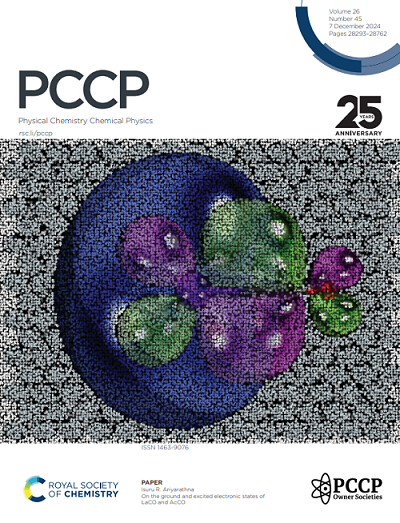利用物理先验均值驱动的高斯过程进行第一原理寡肽结构优化:检验核函数和坐标系的协同影响
IF 2.9
3区 化学
Q3 CHEMISTRY, PHYSICAL
引用次数: 0
摘要
本文章由计算机程序翻译,如有差异,请以英文原文为准。
First-Principle Oligopeptide Structural Optimization with Physical Prior Mean-Driven Gaussian Processes: A Test of Synergistic Impacts of the Kernel Functional and Coordinate System
First-principle molecular structural determination is critical in many aspects of computational modeling, and yet, the precise determination of a local minimum for a large-sized organic molecule is time-consuming. The recently developed nonparametric model, the physical Gaussian Processes (GPs) with physics-informed prior mean function, has demonstrated its efficiency in exploring the potential-energy surfaces and molecular geometry optimizations. Two essential ingredients in physical GPs, the kernel functional and the coordinate systems, could impact the optimization efficiency, and yet the choice of which on the model performance has not yet been studied. In this work, we constructed a testing dataset consisting of 20 oligopeptides and performed a systematic investigation using various combinations of coordinates (structural descriptors) and kernel functionals to optimize these biologically interesting molecules to local minima at the density-functional tight-binding (DFTB) quantum mechanical level. We conclude that the combination of the kernel functional form and coordinate systems matter significantly in model performance as well as its robustness in locating local minima. For our testing set, the synergy between the periodic kernel and the non-redundant delocalized internal coordinates yields the best overall performance for physical GPs, significantly superior to other choices.
求助全文
通过发布文献求助,成功后即可免费获取论文全文。
去求助
来源期刊

Physical Chemistry Chemical Physics
化学-物理:原子、分子和化学物理
CiteScore
5.50
自引率
9.10%
发文量
2675
审稿时长
2.0 months
期刊介绍:
Physical Chemistry Chemical Physics (PCCP) is an international journal co-owned by 19 physical chemistry and physics societies from around the world. This journal publishes original, cutting-edge research in physical chemistry, chemical physics and biophysical chemistry. To be suitable for publication in PCCP, articles must include significant innovation and/or insight into physical chemistry; this is the most important criterion that reviewers and Editors will judge against when evaluating submissions.
The journal has a broad scope and welcomes contributions spanning experiment, theory, computation and data science. Topical coverage includes spectroscopy, dynamics, kinetics, statistical mechanics, thermodynamics, electrochemistry, catalysis, surface science, quantum mechanics, quantum computing and machine learning. Interdisciplinary research areas such as polymers and soft matter, materials, nanoscience, energy, surfaces/interfaces, and biophysical chemistry are welcomed if they demonstrate significant innovation and/or insight into physical chemistry. Joined experimental/theoretical studies are particularly appreciated when complementary and based on up-to-date approaches.
 求助内容:
求助内容: 应助结果提醒方式:
应助结果提醒方式:


